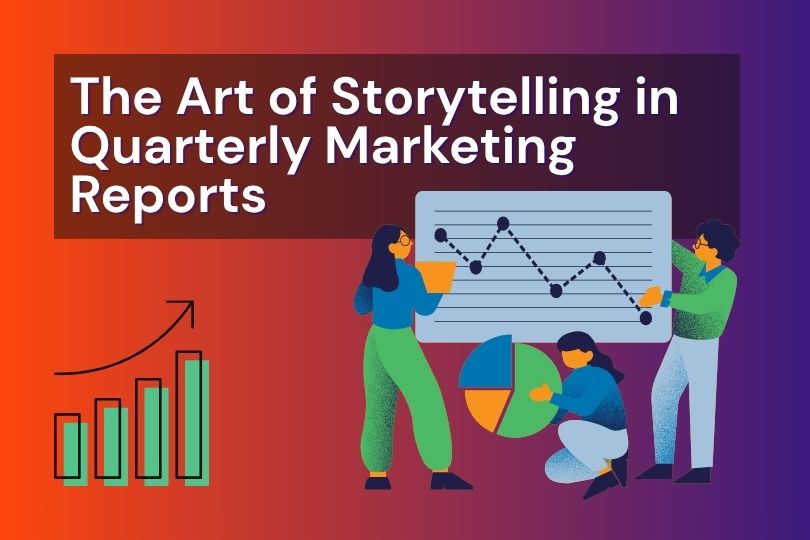
The Art of Storytelling in Quarterly Marketing Reports: A Complete Guide to Engaging Your Audience

Introduction: Every Number in Your Quarterly Marketing Report has a Story to Tell
In today’s data-driven world, a quarterly marketing report is now more than charts and tables; it’s a story that engages your audience. Understanding of data storytelling, you can transform your presentation’s statistics into insights that show action and guide business decisions in a very short time. An AI-powered presentation tool like RocketSlide can help you.
For example, when Company X noticed that their engagement had dropped by 20%, the Quarterly Marketing Report identified the reason behind the drop: content fatigue. By adjusting the tone and frequency of their content, engagement rate increases by 35% in Q3. This is the power of storytelling with marketing data, where numbers become lessons, and lessons become strategy.
In this article, we are going to understand the power of data storytelling in presentations, how to structure your quarterly marketing report, and how to craft a narrative.
Why Data Storytelling Matters in Marketing Reports
Let’s learn about how a quarterly marketing report shouldn’t just list data; instead, it should tell the story behind the numbers, like what worked, what didn’t, and how your brand’s journey went over the quarter. Data-driven storytelling allows you to:
- Highlight trends: When you connect data points, you know the patterns, like which marketing channels are growing and which are not.
- Showcase campaign wins and areas for improvement: Storytelling helps in turning both success and failure into insights.
- Inspire stakeholders to make informed decisions: Good storytelling helps them to see the bigger picture, not just numbers on a slide.
Without storytelling, a marketing report presentation can be ignored. A report filled with plain numbers and charts can feel boring, repetitive, and forgettable, especially for those who aren’t data experts. Charts and numbers alone won’t capture attention, but a story can do it.
How to Structure Your Quarterly Marketing Report
A quarterly marketing report isn’t just about the collection of numbers; it’s a story that takes your reader from overview to insight to action. A good structure ensures your report feels smooth and natural, just like a story. Let’s discuss the correct flow for your marketing report:
- Executive Summary – The Executive Summary is your first impression. You can think of it as a movie trailer; it should not reveal every detail, but rather create excitement for the audience to read the full report.
- Performance Metrics – This is where you show the data. Numbers alone can disturb the audience, so visuals like charts, graphs, or infographics make complex information easier to understand. KPIs like clicks, conversions, ROI, or social engagement should be visualized.
- Insights & Analysis – This section transforms raw data into meaning.
- Actionable Recommendations – When you analyze the data, it’s time to move toward action. This section bridges the story with a real-world application.
- Conclusion – This section summarizes the story and inspires forward-thinking decisions.
Include a story example in each section to make the insights relatable. This small but powerful tip encourages you to add micro-stories throughout the report. A structured marketing report isn’t just organized; it’s strategically designed to lead the reader.
Let’s understand the importance of visual storytelling.
Visual Storytelling:
This means that visuals like charts, graphs, and infographics are the heart of a powerful presentation. A well-designed chart and graph can make the complex data faster than words. Some best practices are:
- Use line graphs to show trends over time.
- Combine charts with short narratives to create a story.
This reminds you that slides should not just look beautiful; they should have purpose. Tools like RocketSlide can help you create visuals that are informative and engaging.
How to Tell a Story People Remember
A study shows that people remember stories, not statistics. You can show a chart full of data to someone, but if it doesn’t connect to a human experience or a clear message, they’ll forget it quickly. You can check out this article on the art of data storytelling by Luke SJ Howard. A marketing report should not be cold or technical. Here is the list of key points on how you can show personality in your report:
- Set the scene
- Introduce the challenge
- Show the journey
- Celebrate the outcome
Example Flow: “In Q1, email open rates were flat. Our analysis revealed that timing was off. By testing subject lines and send times, Q2 saw a 25% lift—proof that thoughtful experimentation drives results.”
This approach ensures that each quarterly business review is not just a report but a story your audience will remember.
Conclusion
The art of storytelling turns your data into actionable insights. By using a clear marketing report presentation, visuals, and human-centered storytelling, your marketing report will have a great impact. When you combine visuals (charts, graphs), metrics (KPIs), and design (slides) with context and story, you create a story that turns the raw numbers into insightful guidance for future strategy.
By using tools like RocketSlide, you can create reports that are polished and smart with AI-powered slide layouts and impactful data-driven storytelling. It helps you in elevating every quarterly business review from a presentation to a narrative that engages, educates, and empowers.
Get the Latest Updates


